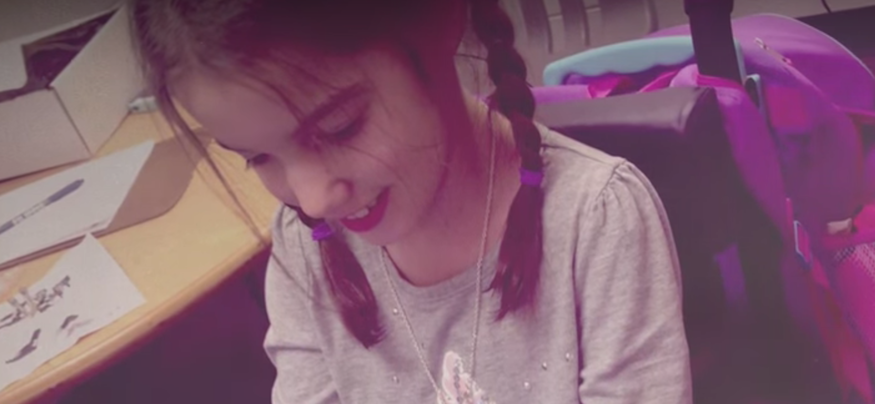Sometimes, it takes just one tweak to a student’s learning environment to make a huge difference.
Technology offers some interesting ways to make those tweaks for students with disabilities, both inside and outside the classroom. Mobility technologies, such as power-assist wheelchairs, allow people with limited mobility to move under their own control. Portable monitors help patients with diseases or disabilities that require constant monitoring to avoid confinement. And augmented communication tools help people who are non-verbal to speak.
One girl’s story exemplifies the power of special education technology to improve lives.
Lilly’s Beginnings
Lilly was diagnosed with cerebral palsy at a young age. Her mother, Stacey, learned firsthand how challenging it can be to locate the services available to help with Lilly’s healthcare and education. Along the way, she also learned to be Lilly’s advocate, working directly with educators and healthcare professionals to ensure Lilly was receiving the support she needed.
Lilly’s education didn’t have an auspicious start. When she transferred to her current school in Grand Ledge, Michigan, she was non-verbal and her communication output was not properly supported. She used an augmentative communication device, but it was clunky and challenging, and it didn’t do much to help her communicate with teachers and her family. Also, according to assistive technology consultant Robin Pegg, Lilly had serious holes in her education, which can be attributed to the common practice of skipping certain curriculum components, creating what Pegg calls a “curriculum casualty” with a “Swiss cheese education.”
The Addition of Technology
Pegg and the rest of the team supporting her assessed her needs and made recommendations for new, more robust technological devices. Lilly now uses a tablet and a sophisticated communication device along with a suite of specialized and general use apps. They also suggested moving her to a regular classroom so she could learn with her peers. Finally, they reviewed the curriculum with her to fill in the holes they had found, says Pegg. The team — and Lilly’s mom — were thrilled to see how quickly Lilly adapted to the new system and progressed to grade level.
The Results
After Lilly first shared her story at ISTE 2015, she’s become not only an integrated student but also an activist for the use of special education technology and differentiated instruction.
She has traveled throughout Michigan to share her story and show how effective technology can be in improving educational outcomes and breaking down barriers. In December, she was part of a delegation that presented to the Michigan State Board of Education, where Lilly gave a speech using her communication device. After writing her speech using her technology tools, Lilly practiced her speech in every classroom in the school. Before this, says Pegg, not many of the students interacted with Lilly. But when she spoke to them and shared her story, they began to see that she’s a kid just like them. “It changed the kids’ idea of what normal is.”
How to Support Children and Adults With Special Needs
As Stacey learned to navigate the world of social services, healthcare and education, she learned a few lessons that can help any caregiver. “Don’t be afraid to ask questions,” she says. If you don’t understand something that a doctor or a social worker says, ask questions until you get it. If you think there might be more to the story or a different perspective, research it. Speak to someone else with expertise or use online sources such as the Center on Technology and Disability, CAST or a specialized association for the type of health issue the person in your care is experiencing.
Finally, says Stacey, “trust your instincts.” If you think you need to see a different doctor, work with a different case worker or move to a different school, do it. You may see a change as striking as Lilly’s.
Find out more about how tablets ca improve the learning experience for students in special education.







